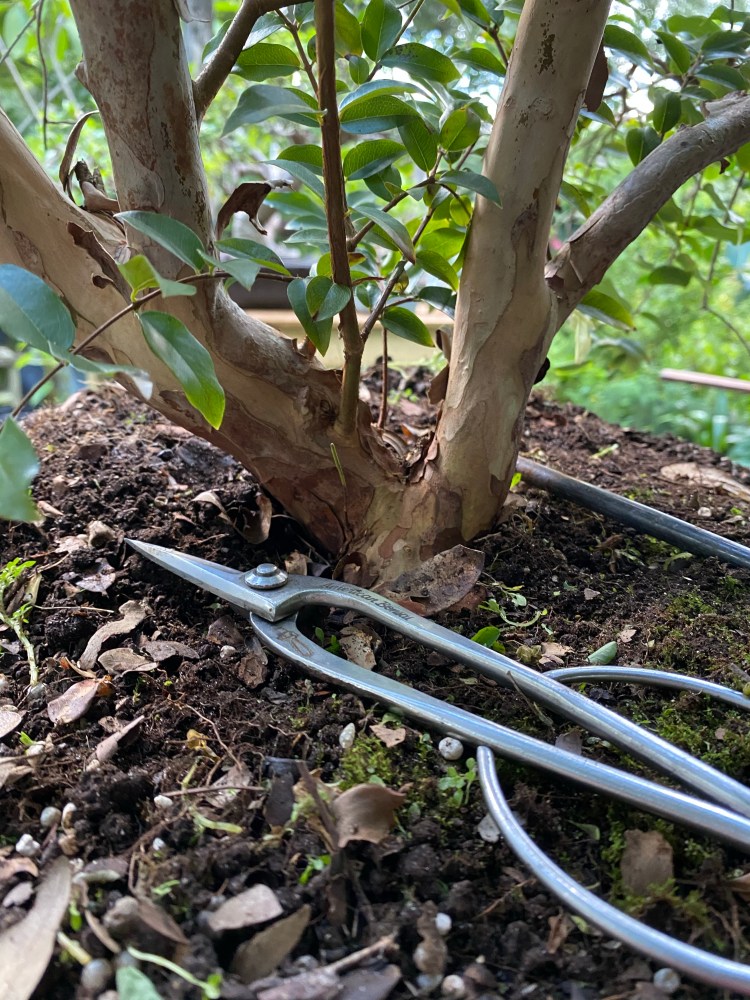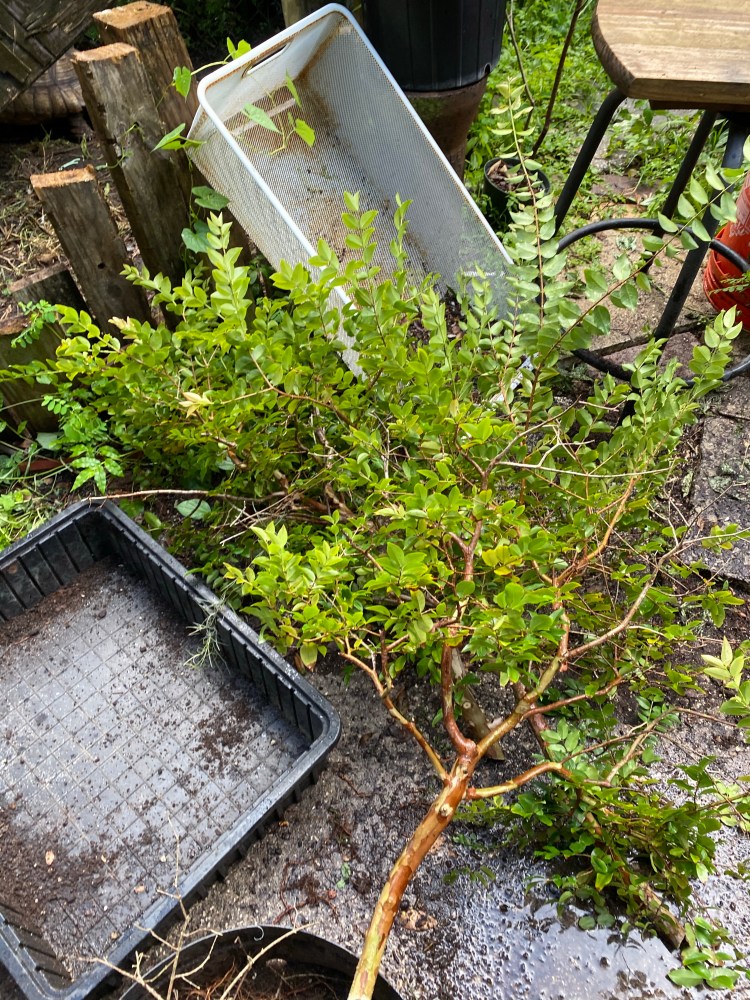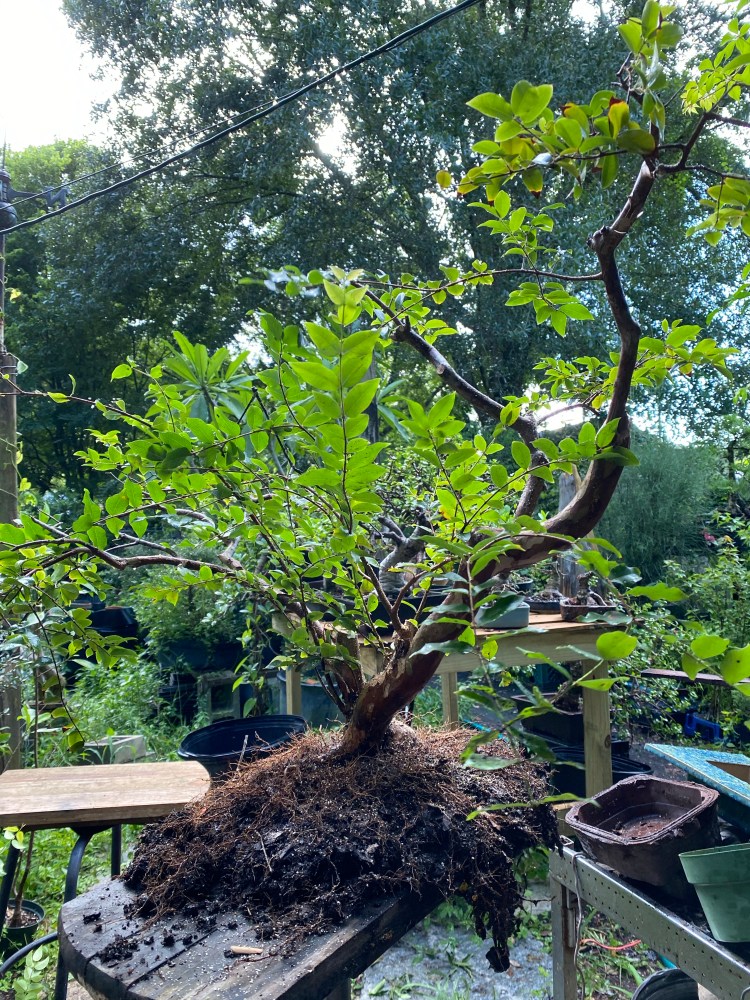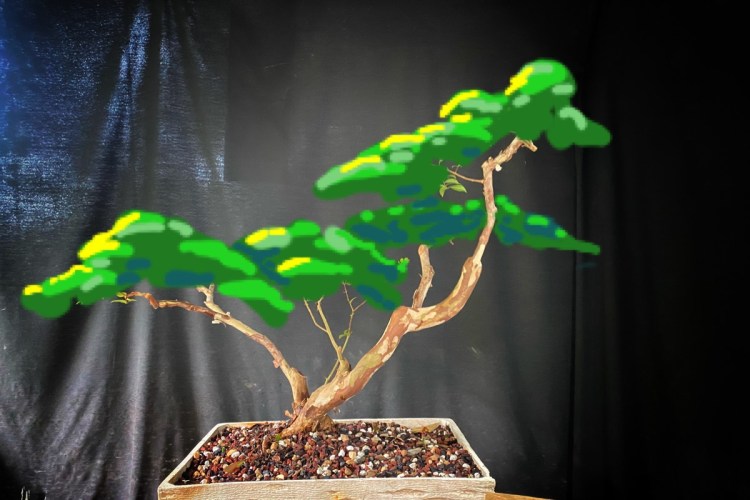I once got in trouble for questioning the name of this tree. But I’m a questioner. I hit hard sometimes with my “but why?” comments.
I mean, to elucidate the problem with the trees nomenclature, look it up. There are several genus’ with the common name jaboticaba (the genus is the first word in the binomial name of an organisms. Like a house cat is “Felis catus”, the genus is Felis, the species is catus. Binomial: 2 names). And of course, jaboticaba is the Spanish spelling. Jabuticaba is the Portuguese spelling, from whence the trees originate. To reference the title, both of the genus’ Plinia and Myrciaria are in the myrtle family, just to confuse us all. And it seems all the trees commonly called jaboticaba have the flowers and fruit grow on the stem or trunk of the tree as opposed to from a bud or growing tip on the ends of the branches (it’s weird to see the fruit. Looks like odd round bugs just hanging out on the trunk)
 photo by Adamaniaf, free for use and in the public domain, details here
photo by Adamaniaf, free for use and in the public domain, details here
So you get the confusion? A bunch of trees with the same common names but different binomial names and add in Bonsai people that just can’t believe a scientist when they tell you that, no, it’s not that, and just because your teacher called it that doesn’t make it true, and we have mass confusion and hurt feelings.
Btw, I won’t get fruit for many years, if at all on my tree. In the ground it’ll take almost 15 years, in Bonsai culture, maybe more.
But…..all that trouble I got into, just because I’m a curious guy (I have a text message threatening that we should “..,settle this like men”) that’s water under the bridge. A bridge I burned behind me long ago. The statute of limitations has even passed…..
And that’s ok, cuz I’m feeling muuuuch better now…..
Here’s Some etymology and even a pronunciation recording to help us out. Because I need all the help I can get (a fact that the Constant Reader knows all too well.) 
The idea with styling a jaboticaba is to make it look like a full sized, deciduous, but tropical tree. Meaning it’ll be spreading, wider than tall, and a place for cows and the odd gaucho to have a break from the intense Brazilian sun.
Which means my tree today is just a bit too tall.
Lemme here the children sing,
“Timber!”

Yup. I just chopped it. Chopped and let fall, discarded on the compost heap like rubbery cabbage leaves and the potato peels you throw away when making paupers’ goulash at the end of the month when all your money is gone and you have to go behind the farmer’s market stand to scrounge for scraps to feed your three boys something, anything, to fill their bellies and stop the tears of hunger they shed as they try to sleep in the cold, bitter, winter nights……..sorry, got a little dramatic there for a moment.
And there’s no amount of propagation I can do to any of the parts I cut off. No air layers, no stem cuttings. The only Successful propagations I’ve seen, heard, and read about is by seed (there’s One study I found. Read it, 4-5 months to get one root on a toothpick sized cutting? And there are several airlayering mentions but I have not seen any actual results, so I’m not buying the claim. Show me!)
Yes, seed. So all the bonsai you’ve seen using this species is seed grown.
Imagine that? It’s almost like the universe is being contrary to all those people on the beginners forums that haze and hassle the noobs whenever they ask about starting a bonsai from seed. (BTW, here’s a secret: Japanese Black Pine are started from seed too).
That doesn’t mean you want to start from seed now. There’s a lot of growing you do from seed that just isn’t bonsai related. I don’t do it myself, I take cuttings or buy bigger trees because the one thing you can’t fake is time, though we can come close with some techniques. But it’s time that gives a black pine it’s bark, or deadwood that real checked, aged look. Or, on some trees, like a trident maple, believable ramification.

So, now that’s I’ve given ammunition to both sides of that argument, the one bad thing with jaboticaba being seed grown is the root spread is usually crappy. One or two strong roots and an inward curving trunk is the norm.
I had to dig deep on this one. Three good roots, mostly radial, but not the best for the trunk line, meaning it looks good on one side with the roots but the trunk has no movement, or branching, or it’s bending over backwards like a politician betraying his principles to secure the big money from that PAC funding his re-election campaign. Oh well. It’ll get better as I repot it over the years, hopefully.
Politicians just get worse, unfortunately.
And that’s about all the damage I can do to this poor tree. 
The base isn’t that bad. And I’ll probably pick a new front for the tree every time I repot it. But time will tell.  It’s been said that it’s best to use only organic fertilizer on this species. The reasoning is that it’s not very salt tolerant at all and a synthetic fertilizer will cause brown tips on the leaves, because synthetics have salts in them. Well, that’s a true statement. Nitrogen, in a soluble form which makes it available to a plant, is a salt. But it’s not SALT, or sodium chloride. We call many things “salts” but that doesn’t mean they are a bad thing. That’s like saying “I don’t eat anything with ingredients I can’t pronounce because, like, chemicals are bad!” Sorry to say but everything is a chemical. EVERYTHING!
It’s been said that it’s best to use only organic fertilizer on this species. The reasoning is that it’s not very salt tolerant at all and a synthetic fertilizer will cause brown tips on the leaves, because synthetics have salts in them. Well, that’s a true statement. Nitrogen, in a soluble form which makes it available to a plant, is a salt. But it’s not SALT, or sodium chloride. We call many things “salts” but that doesn’t mean they are a bad thing. That’s like saying “I don’t eat anything with ingredients I can’t pronounce because, like, chemicals are bad!” Sorry to say but everything is a chemical. EVERYTHING!
The nitrogen molecule in MiracleGro Shake N Feed is identical to the nitrogen molecule in BioGold bonsai fertilizer. At least the soluble kind (when we think in terms of fertilizer you have water soluble and water insoluble. Ammonia nitrate is water soluble, it’s in synthetic ferts and organic ferts. Blood meal is a great source of nitrogen, usually with an NPK of 13-0-0, with more than half water soluble. It’s organic. Water soluble means that the solid nitrogen, or other nutrient, melts in water, and is readily available to the plant, right now. Insoluble means you need some type of microbe to break down the solid to make it soluble, and available to the plant).
When nitrogen is soluble, it is in salt form, whether in synthetic or organic form. The difference between the two tends to be in how much is in the formula. It’s easier to poison (too much dose) a plant with synthetic ferts because there’s just more nitrogen in it than in organics. Unless your using blood meal. Be careful with blood meal. (Especially on the full moon on a Friday the 13th. Blood sacrifices can bring some serious demons into your living room).
What does all this mean for the jaboticaba and organic vs. synthetic ferts?
I have no idea.
If you get one, and you have leaf tip burn (which is the classic symptom for too much nitrogen btw) maybe don’t fertilize as much, or use a time release, or lower nitrogen, or organic. But make sure your water is good, not too much chlorine, and, if you’re close to the beach, there’s your problem.
This is technically my first jaboticaba in training, so I’ll report on my fertilizer success or failures. I put down the new American Bonsai Tools UltraFeed organic NPK of 4-3-2, let’s see what happens.
Anyway, I can write a whole blog post on fertilizers (and I am) but this website and author knows his stuff, here’s a link to an article on salts: garden myths.com with two more links you can follow to fill in some holes you may have in your horticultural education.
Structurally, I really like this one crook in the trunk below. It’s a characteristic of the tree, which has unexplained, weird and odd angle changes.

The one thing I can’t show, except with some drawing or digital manipulation, is what will happen in time. Remember we talked about the passage of time, about four pics above? You can buy time, by getting a bigger trunk, or a well ramified specimen, but if you’re interested in making and developing your own trees, the only thing you can do is wait. Sorry.
But I can try to show you some time flow.
The initial styling:

And the virtual styling :
That looks good. Maybe a little more green on the top right, but there you go.
You know what? I think, just so I don’t hurt anyone else’s feelings, I’ll go back to the Native American spelling from Brazil and start calling the tree “ïapoti’kaba”.
It has a lyrical ring to it…
Glad to read you’re doing much better, Sir!; and yes you are because, Baaaam, there’s your style again; love it for being to the point, visionary and unbounded! Thanks again and good to have you back.
BOT; are Jaboticabas slow growers, or they just take long to mature? (Couldn’t find the answer.)
LikeLike
The trunks are slow, so put them in the ground. The branches develop fast though. This one will be looking great next year
LikeLiked by 1 person
Adam. So great you are feeling better. It is easy to tell. I have missed your unique style of education. Looking forward to your fertilizer teachings.
LikeLike
Thanks Bruce, hope you’re doing well?
LikeLike
This isn’t your first rodeo with tree nomenclature questions. I’ve been there too and probably got in a few arguments about Ficus Nerifolia vs Ficus Salicaria. I resolved it in my mind by just referring to them as Willow Leaf Ficus as I think many (less vocal) people did. You were likely not among the less vocal. I enjoy your blogs as they are about so much more than trees. Politicians? Now there’s a euphemism! Since I have a limited number of species in my garden and tend to learn from the trees, not from books, your blog helps me identify species to target and species to avoid based on the strengths and weaknesses of my own horticultural knowledge and abilities. I look forward to seeing you when you are in SFL next.
LikeLiked by 1 person
Fantastic information. That garden myths link, as well as the authors other articles, contains some fascinating new things for me to continue to research. Your insight is much appreciated, as always.
LikeLiked by 1 person
Reblogged this on Wolf's Birding and Bonsai Blog.
LikeLike
How good are they at back budding. I have one I am thinking of trunk chopping but I do not know if it will back bud with no branches or leaves left.
LikeLike
They backbud pretty well. I’ve grown them from root cuttings and they sprout from the cut end with just a little dieback.
LikeLike
Are these able to be defoliated? I have found some scant info online but nothing substantial?
I have a 40cm tall tree I grew from a pencil thick 10cm tall mass produced “bonsai” at a big box nursery.
When I prune I usually leave the leaves at the tip of the branch I want to keep and cut back when backbuds pop up.
LikeLike
I have defoliated them successfully, and even chopped a limb to nothing, and had it backbud.
LikeLike
I have a Jaboticaba as a poolside potted plant. It is ~ 40″ tall and has produced 3 fruit over 2 different seasons. I have grown it about 10-12 years, from a 10″ tall twig into a beautiful Bonsai candidate. I also have Pomegranate, Tamarind, Lychee, Longan, Calamondin and many other fruiting patio trees/large Bonsai. I live near Heathcote and love their exhibits.
LikeLike